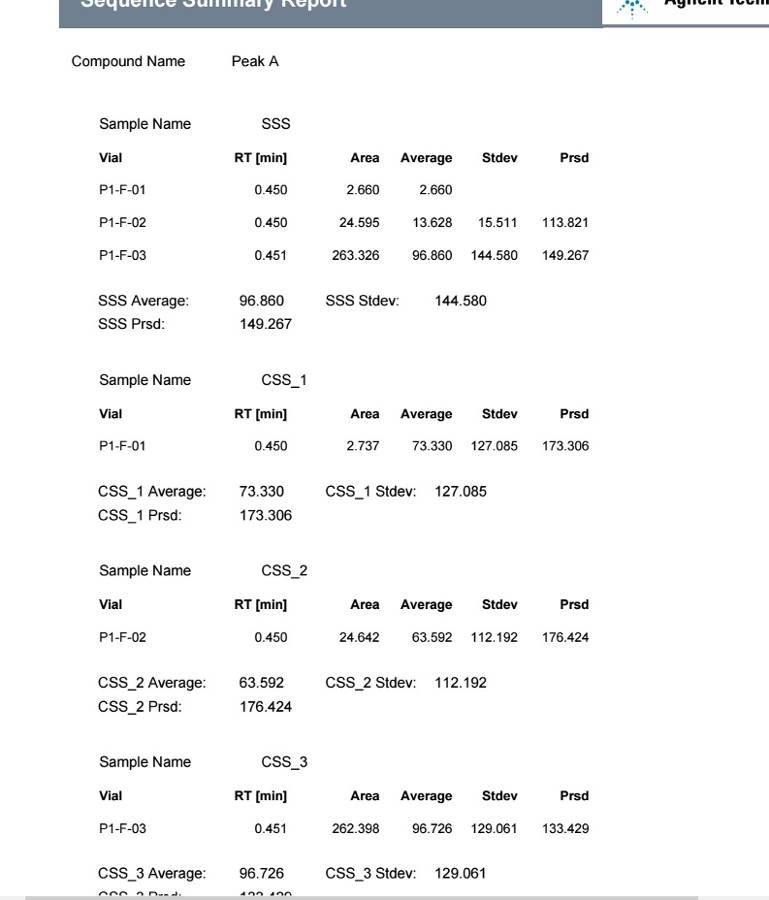HI there,
I'm looking to report pooled precision from sequences but do not know how many samples wil be run.
The sequence takes the format:
| inj/vial | |
| Blank | 1 |
| CAL 1-6 | 1 |
| Precision (Cal 3) | 6 |
| Sample 1-5 | 1 |
| Precision 2 (Cal 3) | 1 |
| Sample 6-10 | 1 |
| Precision 3 (Cal 3) | 1 |
| Sample 10-13 | 1 |
| Final Precision 4 (Cal 3) | 1 |
The first set of precision data uses 6 replicate injections then after every 5 samples there is a single injection of the same cal standard and the data is combined with the Precision data from the 6 injections and the pooled RSD is then also reported. The problem is I don't know how many samples ie. how many individual precision injections (after every 5 samples) will take place in the sequence and can't think how to set the report up to take this into account.
If you are able to suggest a way to approach this it would be much appreciated.
Many thanks

